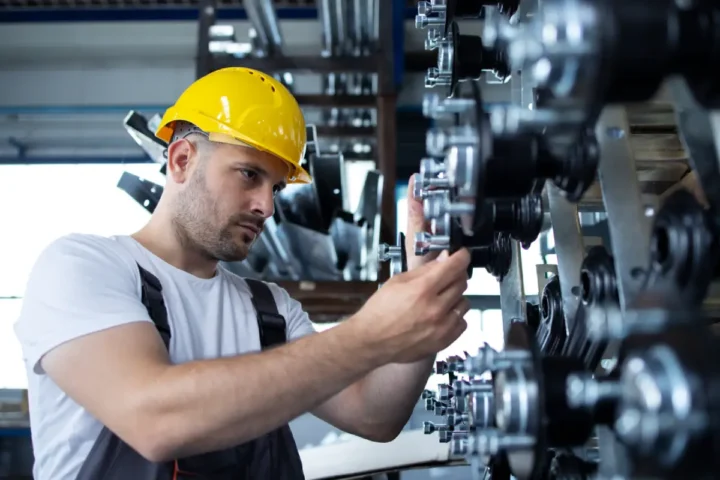How Proper Lubrication Can Extend Machinery Life
Proper lubrication is fundamental to maximizing equipment lifespan and reliability across any industry. Lubricants reduce friction, disperse heat, and shield surfaces from corrosion and contaminants by forming a protective barrier between moving parts. Businesses that rely on industrial suppliers in North Carolina or similar distributors understand that the right lubrication strategy is as vital as the machinery itself. Lubrication isn’t just about pouring oil into a gearbox; it’s a managed process that supports everything from smooth operation to optimal energy efficiency and production output.
Consistent attention to lubrication can distinguish between decades-old machinery and fleets plagued by breakdowns. The costs of inadequate lubrication, including premature wear and catastrophic failure, can quickly surpass the upfront investment in best-practice solutions. As awareness grows, more industrial sectors make lubrication a core aspect of their preventive maintenance philosophy.

Recognizing the Dangers of Poor Lubrication
Neglecting machinery lubrication exposes components to direct metal-on-metal contact, causing friction that quickly deteriorates critical parts. Bearings, gears, and chain systems are especially vulnerable to overheating and abrasive damage, risking costly failures. According to leading industry sources, 40% to 50% of mechanical equipment failures are directly related to poor lubrication practices or contaminated lubricants. Consequences go beyond mechanical breakdowns—lost productivity, increased energy consumption, and safety hazards can all arise from disregarding correct lubrication.
Excessive vibration, abnormal noises, elevated temperatures, and visible wear or leaks are signs of improper lubrication. Organizations that tackle these warning signs early and invest in the correct lubrication infrastructure protect machinery and bottom lines.
Key Practices for Lubrication Success
Success in lubrication management starts with adherence to manufacturer recommendations. Following equipment-specific guidelines for the type, quantity, and frequency of lubricant application is essential. Cleanliness must be maintained throughout storage and application, as introducing dirt or moisture can compromise lubricant performance. Routine inspections should check lubricant levels, identify leaks, and monitor for signs of degradation.
Using color-coded dispensing systems or automated lubrication devices ensures accuracy and prevents mix-ups between lubricant types. Training operators and maintenance staff to understand lubrication basics further helps avoid the pitfalls of under or over-lubrication.
Selecting Lubricants for Performance and Longevity
Choosing the right lubricant involves more than just compatibility with manufacturer specs. Formulations vary widely, and the ideal choice should reflect operational conditions such as temperature, load, speed, and contaminant exposure. Synthetic oils, biodegradable greases, and advanced additives can deliver superior protection in harsh environments, while food-grade lubricants are available for sensitive applications.
Relying on data sheets and expert advice enables informed decisions that directly influence machinery longevity and reliability. Resources like technical lubrication guides provide in-depth comparisons, and case studies to help maintenance teams optimize their selection strategy.
Tools and Technologies for Better Maintenance
Modern maintenance programs increasingly turn to digital tools for precision in lubrication management. Technologies such as condition monitoring sensors, infrared thermography, and automated lubrication systems simplify problem detection and reduce risks of human error. With real-time data on lubricant conditions or equipment temperature, teams can time interventions for the greatest impact instead of waiting for failures.
These advancements allow even small facilities to implement predictive and preventive maintenance programs, driving efficiency and equipment uptime previously achievable only by large-scale operations.
Resources for Industry Professionals
Access to quality information is essential as technologies and recommendations evolve. Dedicated publications, manufacturer webinars, and technical societies provide updates on the latest developments in lubrication science and application. Staff certifications and ongoing training keep teams aligned with industry best practices, reducing guesswork and optimizing results.
Online discussion forums also foster community troubleshooting, while vendor partnerships can give access to product testing, expert support, and timely updates about regulatory or industry-driven changes.
Looking Toward the Future of Machinery Care
As industries demand greater uptime, efficiency, and sustainability from their machinery, proper lubrication is essential for success. The move toward automation and data-driven maintenance will further reinforce the role of lubrication in operational excellence. Smart organizations will continue leveraging advancements in lubricants and maintenance technology to ensure the longest possible lifespan—and the best possible performance—of their assets.


